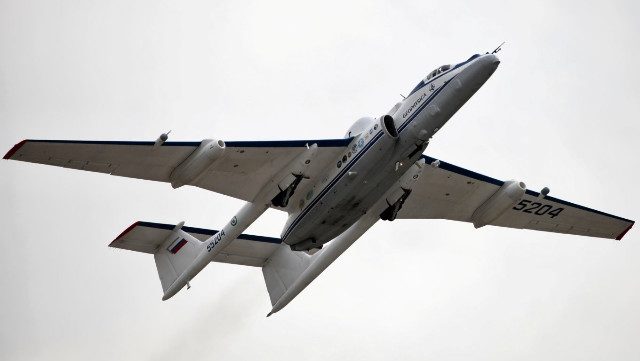
Evidence has recently surfaced in the public sphere, showing that the rare M-55 Geofizika high-altitude aircraft, belonging to Russia, has had its preservation ceased and its flights resumed from the Ramenskoe airport near Moscow.

A distinctive container, most likely a UKR-RT fitted with radio reconnaissance gear, was observed affixed to the aircraft’s wing. Similar containers were first evident underneath the Su-34 during the Russian military’s Zapad-2021 operations two years prior.
The focus on the M-55 Geofizika was largely due to its usage as a high-altitude reconnaissance plane for missile assaults during the Soviet era.
To elaborate further, in the 1960s, the Soviet Union conceived a design for a high-altitude aircraft known by the codename M-17 Stratosphere, intended to intercept the US’s U-2 reconnaissance aircraft or high-altitude balloons.
Nevertheless, the aircraft’s initial flight did not take place until 1982, at which point the issue of high-altitude balloons was no longer pertinent.
Subsequently, the Soviet leadership transmuted the project into a high-altitude reconnaissance plane for missile direction, specifically for the Soviet OTRK Oka [discontinued], effectively a predecessor to the OTRK Iskander. The revised design was coded as M-55 Geofizika, with its maiden flight occurring in 1988.
Reports suggest that around 5 such aircraft were manufactured in total, and since 1996 they have been reconfigured for conducting civilian scientific research, including investigations of the stratosphere shared between Russia and European nations.
In 2017, Russian specialty sources claimed that the M-55 Geofizika was placed in conservation due to a shortage of scientific research contracts. Thereafter, all public records and mentions of these types of aircraft disappeared, until very recently.
The resumption of M-55 Geofizika flights could bear a dual significance: It might be part of a push to engineer onboard equipment for Russia’s tactical aviation or a move towards resuming the aircraft’s original reconnaissance role in missile strikes.
Significant specifications of the M-55 Geofizika include a fuselage length of 22.67 meters, a wingspan of 37.4 meters, and a maximum take-off weight slightly above 23 tons. Designed for a single pilot, the plane reaches a top speed of approximately 743 km/h at an optimal height of 20 km. The aircraft’s maximum flight altitude is 21.5 km, and its practical range stands at 1220 km.